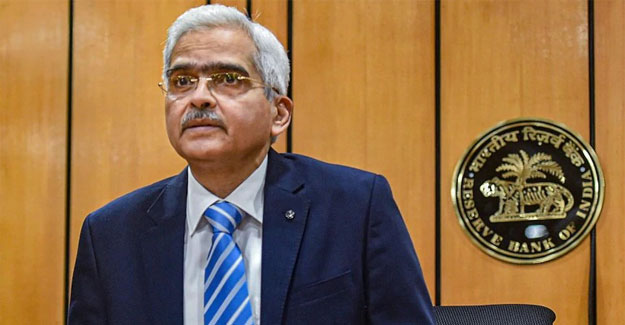
RBI Cuts Reverse Repo Rate From 4% To 3.75%
The Reserve Bank of India (RBI) announced a host of measures, including injecting Rs 50,000 crore via targeted long-term repo operations, so that banks provide more liquidity, specifically to small and mid-sized non-banking finance companies (NBFCs) and micro-finance institutions. The RBI also cut the reverse repo rate from 4% to 3.75%, so that banks are nudged to lend more, instead of deploying funds with the central bank. Measures to tackle Covid-19 These measures are aimed at softening the impact of Covid-19 pandemic on the financial markets, RBI Governor Shaktikanta Das said, adding that the central bank is closely monitoring the developments and is vigilant. The other measures unveiled by the RBI include providing Rs 50,000 crore refinance to all India financial institutions — Rs 25,000 crore to Nabard, Rs 15,000 crore to SIDBI and Rs 10,000 crore to NHB — and increasing the ways and means advances (WMAs) limit to 60% to allow states the flexibility to borrow and ensure that their borrowings are not bunched up in the early part of this financial year. More relief Among the regulatory measures, the RBI has allowed the three-month moratorium period on loans (from March 1, 2020 to May 31, 2020) to be excluded by banks from the counting of days past due (90 days) when it comes to asset classification by banks. However, during this standstill period on asset classification, banks have to make a provision of 10% and the same can be reversed if there is no slippage. Given the challenges in resolution, the RBI has extended the resolution time period by 90 days. Emphasising the need to conserve capital during the current challenging times, the Governor said scheduled commercial banks and co-operative banks cannot declare dividend till September-end 2020. In a bid to provide succour to NBFCs with exposure to the commercial real estate sector, the RBI has aligned the date of commencement of commercial operations with that of commercial banks so that delays in execution of projects in the current environment does not result in the projects becoming non-performing. Assuring that the RBI will act as and when the need arises, the Governor said with retail inflation expected to go down to about 4% in the second half of FY21, it will open up space for rate action. ‘Banks need to act fast’ Commenting on the RBI announcements, Vydianathan Ramaswamy, Director- Ratings, Brickwork Ratings said, “Reduction in LCR limits for banks to 80% from 100% is a good liquidity measure in the current economic situation. However, banks need to act fast in extending credit to India Inc." “TLTRO 2.0 is an important step in safeguarding the stability of the non-banks. However, it's equally important to ensure this additional liquidity is available to a wider spectrum of NBFCs and MFIs and not limited to a few. The refinancing measures through NHB, SIDBI, NABARD, etc is a welcome relief to HFCs and NBFCs. Non-banks with limited incremental funding options were facing increasing risks of default," he added.
Textile Excellence
If you wish to Subscribe to Textile Excellence Print Edition, kindly fill in the below form and we shall get back to you with details.








